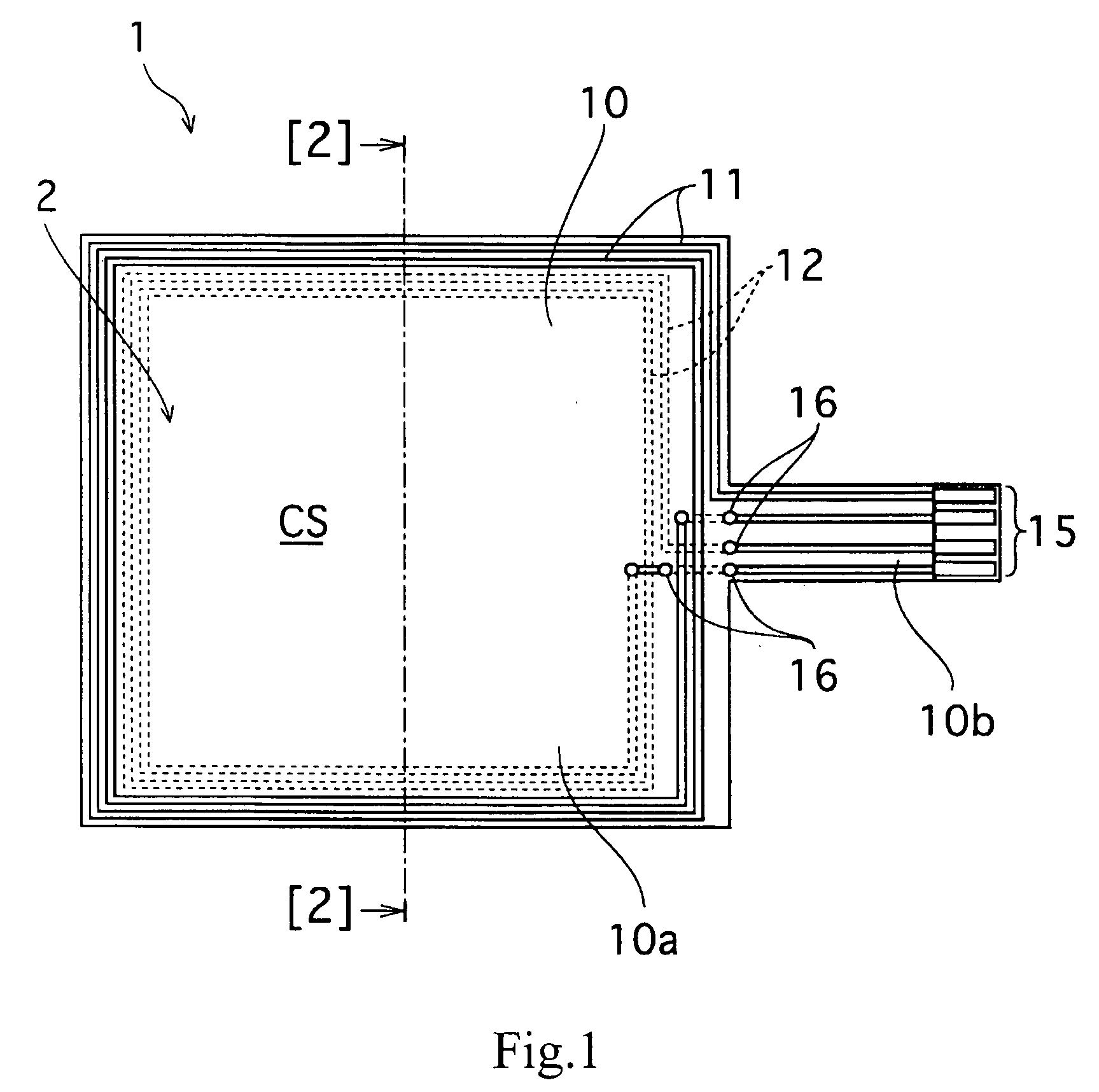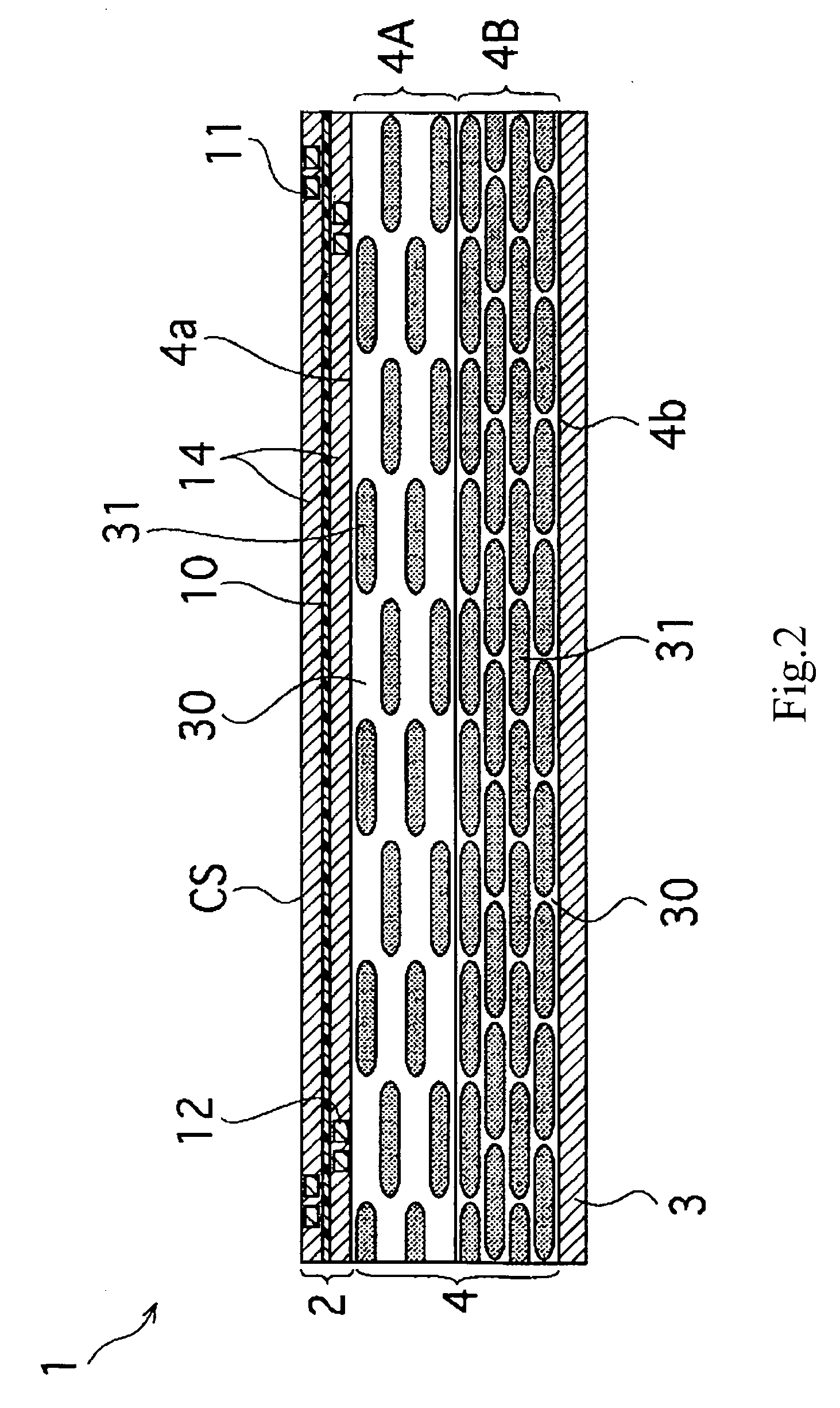Magnetic core member, antenna module, and mobile communication terminal having the same
- Summary
- Abstract
- Description
- Claims
- Application Information
AI Technical Summary
Benefits of technology
Problems solved by technology
Method used
Image
Examples
first embodiment
[0038]FIGS. 1 and 2 show the configuration of an antenna module 1 according to a first embodiment of the present invention. Here, FIG. 1 is a plan view of the antenna module 1, and FIG. 2 is a sectional view taken along a line [2]-[2] in FIG. 1.
[0039] The antenna module 1 includes an antenna substrate 2 having first and second antenna coils 11, 12 formed therein, a shield plate 3, and a magnetic core member 4 disposed between the antenna substrate 2 and the shield plate 3.
[0040] In the antenna substrate 2, the first antenna coil 11 for communication with a reader / writer, and the second antenna coil 12 for communication with an IC tag, such as an IC card, are disposed and formed on a common base film 10. The first antenna coil 11 is disposed and formed on a surface side (communication surface CS) of the base film 10, and the second antenna coil 12 is disposed and formed on an rear-surface side (a side opposite to the communication surface CS) of the base film 10 (FIG. 2).
[0041] Th...
second embodiment
[0073] Referring next to FIG. 6, the configuration of an antenna module in a second embodiment of the present invention will be described. Note that in the figure, portions corresponding to those of the first embodiment are denoted by the same reference symbols, and that their detailed descriptions are omitted.
[0074] A magnetic core member 42 forming an antenna module 1 according to the present embodiment has a two-layered structure including a first layer 42A on the side of an antenna substrate 2 and a second layer 42B on the side of a shield plate 3.
[0075] Each of the first layer 42A and the second layer 42B of the magnetic core member 42 is formed by filling an insulating material (binder) 30, such as a synthetic resin, with a soft magnetic powder 31. The soft magnetic powder 31 is aligned parallel to the sheet surface.
[0076] In the present embodiment, similarly to the above-mentioned first embodiment, the filling rate of the soft magnetic powder 31 is made to differ between t...
third embodiment
[0086]FIG. 7 shows the configuration of an antenna module in a third embodiment of the present invention. It is noted that in the figure, portions corresponding to those of the above-mentioned first embodiment are denoted by the same reference symbols, and that their detailed descriptions are omitted.
[0087] A magnetic core member 43 forming an antenna module 1 according to the present embodiment has a two-layered structure including a first layer 43A on the side of an antenna substrate2 and a second layer 43B on the side of a shield plate 3. Each of the first layer 43A and the second layer 43B of the magnetic core member 43 is formed by filling an insulating material (binder) 30, such as a synthetic resin, with a soft magnetic powder 31.
[0088] In the present embodiment, the soft magnetic powders 31 in a first surface 43a opposed to the antenna substrate 2 and a second surface 43b opposed to the shield plate 3, of the magnetic core member 43, are aligned differently from each other...
PUM
 Login to View More
Login to View More Abstract
Description
Claims
Application Information
 Login to View More
Login to View More - R&D
- Intellectual Property
- Life Sciences
- Materials
- Tech Scout
- Unparalleled Data Quality
- Higher Quality Content
- 60% Fewer Hallucinations
Browse by: Latest US Patents, China's latest patents, Technical Efficacy Thesaurus, Application Domain, Technology Topic, Popular Technical Reports.
© 2025 PatSnap. All rights reserved.Legal|Privacy policy|Modern Slavery Act Transparency Statement|Sitemap|About US| Contact US: help@patsnap.com



